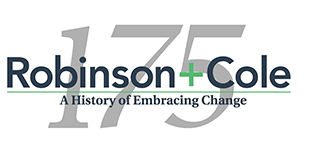

CREATING THE LEGACY
Our roots go back to a time when city streets were unpaved, and horses and buggies dotted the landscape. Lucius F. Robinson, a young man of 21, set up a simple, one-lawyer office on State Street in 1845. At that time, the City of Hartford had 11,000 inhabitants. Stretching over a mile long and three-quarters of a mile wide, it had become a bustling river port. By the time of the Civil War, it was a thriving industrial center, with its economy based mostly in manufacturing, while insurance, banking, and publishing were budding industries at that time.
MOVING TOWARD SPECIALIZATION
Following the Civil War, Hartford was the wealthiest city in the country, and the state’s future was bright. That optimism carried through to the early twentieth century, when the banking and insurance industries expanded even more. Still, Hartford was best known as a manufacturing haven, producing a range of items, from machinery, tools, and firearms to typewriters, electrical devices, and rubber products. Robinson+Cole’s work was intertwined with these industries, which helped shape the position of the corporate lawyer.
Up until the 1930s, lawyers handled all facets of the law, from trying cases and taking appeals to drawing wills and handling title searches and closings. After that, in response to significant changes in the mood and stability of the country, Robinson+Cole transformed from a small, family-directed operation to a large, diversified organization. Our lawyers focused on business law, in particular law related to banks, insurance companies, and manufacturers, as well as on trial, probate, real estate, and tax law. Further, many of the firm’s lawyers took on pro bono cases for various charities and formed ties with civic, cultural, and charitable organizations.
ADAPTING TO THE POST-WORLD WAR II ERA
The decades from Pearl Harbor to Watergate were filled with much turbulence as the pace of society and technology increased dramatically. World War II left the firm short staffed, with two lawyers serving in the military and one moving to the legal staff of the War Production Board. Hartford’s factories also contributed to the war effort, manufacturing aircraft engines, munitions, and machinery, resulting in a large influx of workers crowding the city.
From the 1970s through the mid-1980s, New England experienced great economic growth. Insurance companies, banks, and brokerage, accounting, and law firms became larger and more influential; accordingly, Robinson+Cole also grew rapidly, while at the same time maintaining its reputation for quality and professionalism. The Litigation Group expanded into more diverse practices and, for the first time, paralegals were hired, initially in the probate area and then in other practice areas, such as litigation, corporate, municipal finance, and government relations.
FORMING A STRATEGIC VISION
By the late 1980s, Robinson+Cole had developed New England’s biggest and most comprehensive land use and environmental practice, attracting cases from around the country. With national disasters such as Love Canal, Three Mile Island, and Exxon Valdez, environmental issues became more significant. By representing both developers and conservational interests, Robinson+Cole set itself apart from other law firms.
In addition, in response to the high number of corporate mergers, the increasing complexity of tax laws and government regulations, the aggressiveness in real estate development, and the significant rise in litigation, Robinson+Cole constructed a strategic vision and a new form of internal organization to ensure viability. The firm began to hire lawyers with additional experience in practice areas related to that activity. Some had degrees in geology, engineering, biology, chemistry, and land use planning, while others had worked in federal and state environmental agencies or in state and municipal planning offices.
ESTABLISHING A REGIONAL PRESENCE
The recession that started in the late 1980s greatly changed New England. Consequently, the firm grew at a slower rate than before, although some practice areas prospered. The real estate and land use practices were deeply affected by this economic downturn, but it was no surprise that the creditors’ rights and bankruptcy areas thrived. The firm not only represented troubled borrowers but also banks, which had to deal with their problem loans. The environmental, tax, litigation, and labor and employment areas also flourished during this time. Robinson+Cole adopted a more outward-looking approach, striving to enhance its reputation as a regional law firm with a strong partner presence in all its offices and experienced representation in every area of the law, which led to the opening of offices in Boston and New York City.
CONTINUING TO EMBRACE CHANGE INTO THE 21ST CENTURY
To adapt to the needs of our clients and ensure that high-quality service continued as a top priority, Robinson+Cole prepared for the twenty-first century by embracing technology and innovation and building on its long-established practice of training and developing the careers of a diverse array of new lawyers. While expanding its geographical footprint to include Providence, Los Angeles, Wilmington and Philadelphia, the firm expanded existing practices such as litigation, business transactions, bankruptcy and real estate and added new practices, such as affordable housing finance, health care and immigration.
From its origins as a one-lawyer office in 1845, Robinson+Cole now has offices spread throughout the Northeast, Mid-Atlantic, Florida and California. The firm has adopted a strategic plan that had identified collaboration, civility and inclusion as the core values that have been the foundation of our proud history and that will serve as the inspiration for our future. As our firm continues to grow we recognize our proud history of dedication to client service and to the communities we are a part of, and we remain committed to continuing to adapt to the needs of our clients in a rapidly changing world.
A timeline of our history is available here.
View our Timeline HERE.